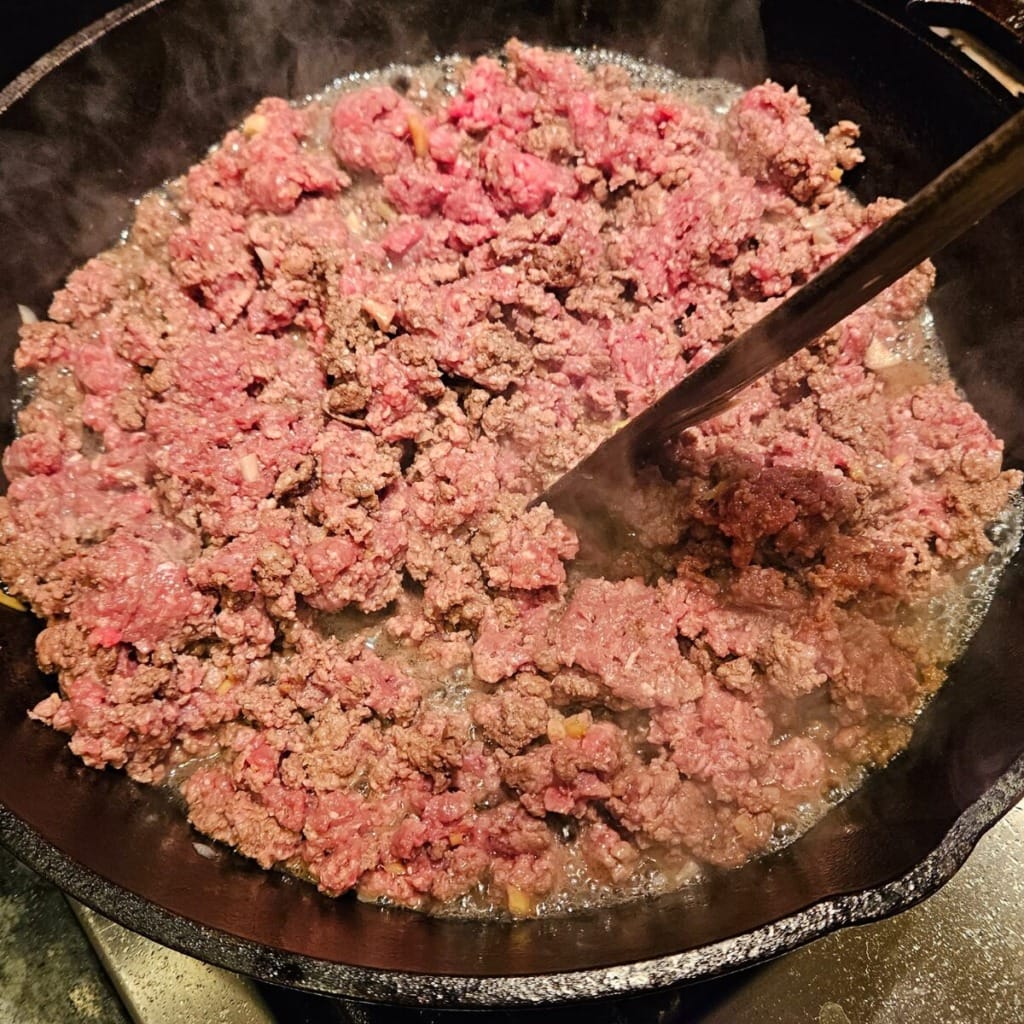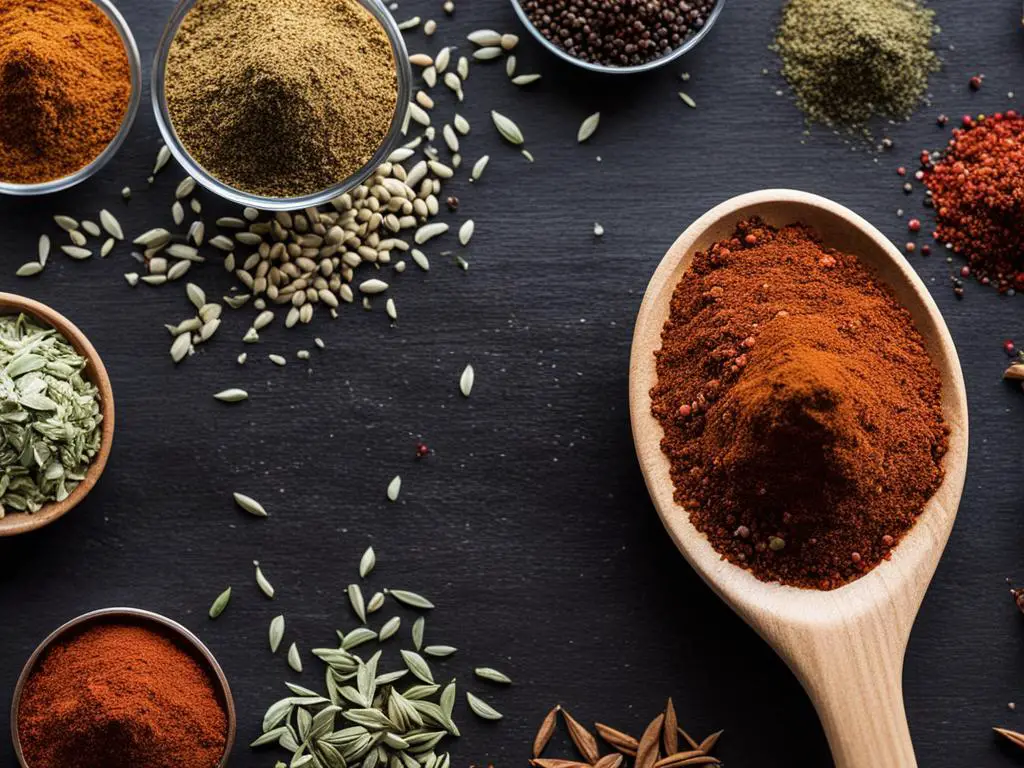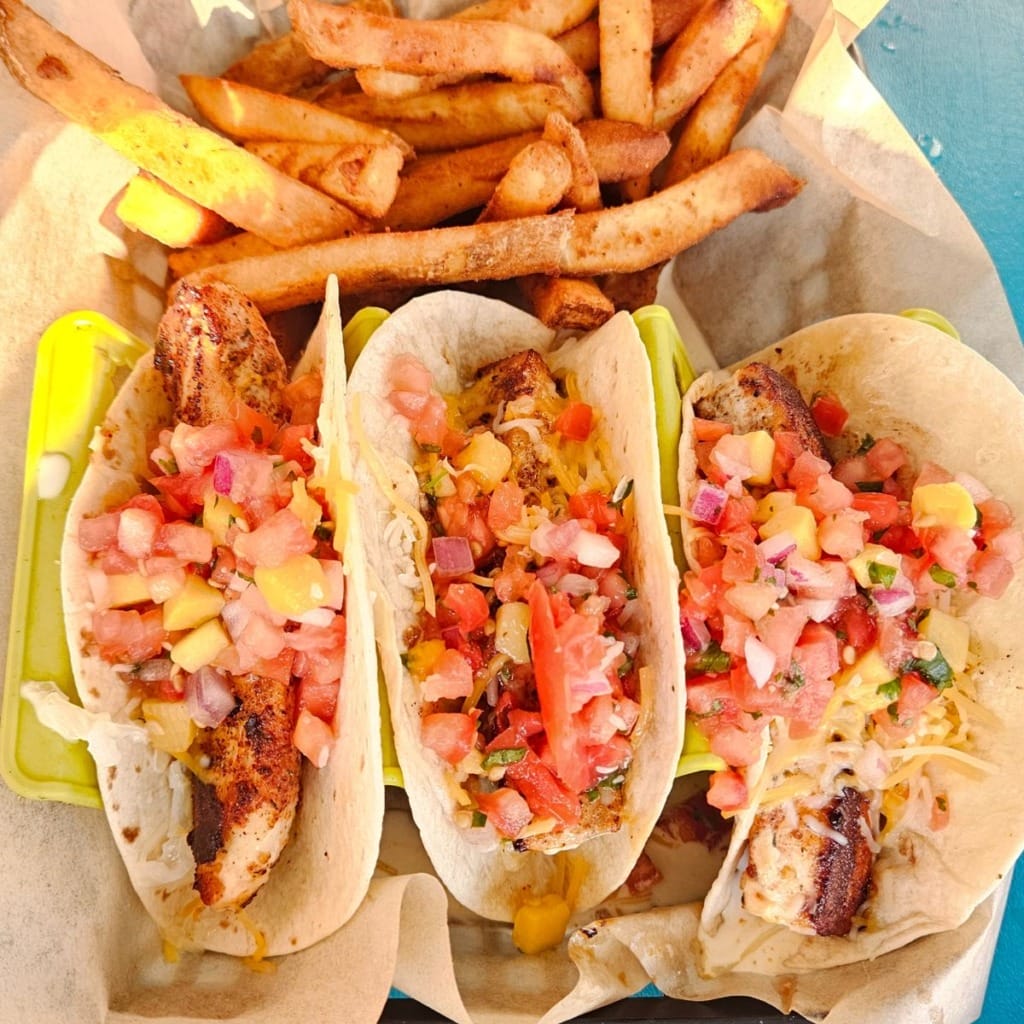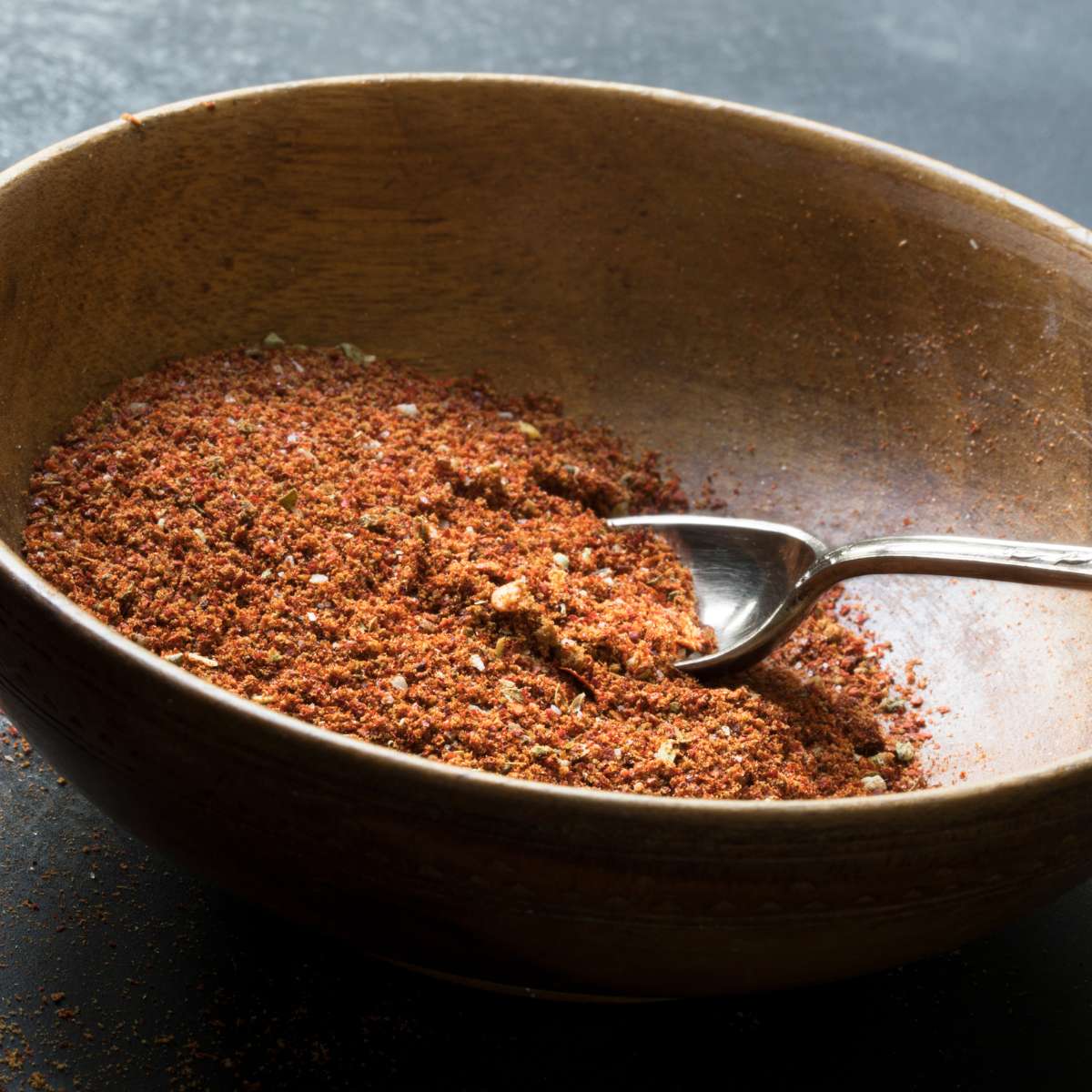Ever wondered what is in taco seasoning (on Amazon) that gives it that distinctive kick? This magical blend of spices is the secret ingredient behind the zesty flavor of your favorite Mexican dishes. Taco seasoning (on Amazon) is more than just a convenience; it’s a culinary essential that transforms simple ingredients into vibrant, flavor-packed meals.
While the basic components like chili powder and cumin are commonly known, the full recipe offers room for customization, allowing you to tweak it to your taste. Learn about the world of spices with us as we talk about what’s in taco seasoning (on Amazon) and how you can make your own to make your next taco night more interesting.
What is in Taco Seasoning: Key Ingredients
For a truly authentic taco seasoning composition, a few key spices are necessary. Each spice in taco seasoning plays a vital role, contributing to the overall flavor profile. Understanding the importance of these individual components can elevate your homemade taco seasoning to new levels of delicious authenticity.
Chili Powder: The Backbone of Heat
Chili powder stands as the primary source of heat and sets the foundational warmth of the mix. Composed of a blend of spices, the intensity of chili powder heat can vary depending on the variety used. By selecting the right type, you can adjust the heat to your desired spiciness, making your taco seasoning a true reflection of your taste preferences.

Garlic and Onion: The Savory Foundations
Garlic and onion powders are essential components in taco seasoning, providing a robust base of savory flavors. Garlic powder offers a concentrated burst of warm, aromatic taste that enhances the overall depth of the seasoning. Meanwhile, onion powder contributes a slightly sweet yet sharp flavor that complements the garlic, enriching the complexity of the mix.
Together, these two powders lay the foundational flavors crucial for building taco seasoning’s characteristic bold and zesty profile. Incorporating these ingredients ensures that every bite carries a full-bodied taste, which is essential for authentic taco dishes.
Oregano, Cumin, and Paprika: Layering the Flavor Profile
When it comes to the other key spices in taco seasoning, oregano, cumin, and paprika add complexity and depth. Oregano imparts a spicy yet sweet undertone to the mix, while cumin adds an unmistakable smoky earthiness that is essential to the taco experience. Paprika, preferably in its smoked variety, offers both depth of flavor and vibrant color to perfect this harmony of spices.
In a Pinch? Buy Premade
If you’re in a pinch – there’s nothing wrong with using a premade taco seasoning mix. I normally don’t love store brands for anything – however I have to say that this particular taco seasoning from Happy Belly (an Amazon brand) is pretty darn good. What I like about it the most is it has some cornstarch in it, so it makes the beef seasoning thicker (less messy when it comes time to eating). When you don’t have a thickening agent like cornstarch, the beef tends to be a bit watery and eating it could be a little messy.

My 11 and 12 year old boys love this seasoning. They are also messy eaters, so I appreciate that this taco seasoning has a thickener in it, so it’s not as watery and messy when they make their own tacos and burritos during Taco Tuesday nights at my house.
Why Homemade Taco Seasoning Trumps Store-Bought
When you make your own taco seasoning at home instead of grabbing a store-bought packet, you’re stepping up your cooking game in more ways than one. Here’s why homemade always wins:
- Freshness: The spices in your homemade mix are fresher, making your meals taste better.
- No Preservatives: Your seasoning will be free from any artificial additives and preservatives, making it a healthier choice.
- Customization: You can tailor your taco seasoning to your dietary needs and flavor preferences, whether you need less salt or more heat.
- Quality: You have the option to use high-quality or organic spices, enhancing both the flavor and healthfulness of your meals.
- Satisfaction: Mixing your own spices can be incredibly satisfying. You get to enjoy both the process and the knowledge that you’re creating something uniquely delicious.
Homemade taco seasoning not only gives you control over what goes into your food but also enhances the overall quality and taste of your dishes. Once you’ve tried your own blend, you’ll never want to go back to the store-bought packets. It’s not just about the superior flavor—making your taco seasoning is about making every meal an experience.
Quantities and Measurements: Perfecting Your Mix
Achieving the perfect taco seasoning mix is all about precision in quantities and measurements. Traditional recipes suggest a blend of chili powder, ground cumin, garlic and onion powders, dried oregano, paprika, salt, and pepper. The standard measure of 2 tablespoons of this mix suffices for seasoning one pound of meat, providing a balanced flavor profile.

For those who enjoy meal prepping or making larger batches, this recipe can be easily doubled or tripled. Adding a little water (when it comes time to cooking) to the meat and seasonings mix can also help distribute the flavors more evenly, resulting in a juicier, more succulent taco filling.
| Ingredient | Measurement |
|---|---|
| Chili Powder | 1 tablespoon |
| Ground Cumin | 1 tablespoon |
| Garlic Powder | 1 teaspoon |
| Onion Powder | 1 teaspoon |
| Dried Oregano | 1 teaspoon |
| Paprika | 1 teaspoon |
| Salt | 1 teaspoon |
| Ground Black Pepper | 1/2 teaspoon |
To customize your taco seasoning recipe, feel free to adjust the spice quantities listed above to suit your taste preferences. Remember, practice makes perfect, and experimenting with different measurements may lead to discovering your ultimate mix!
Perfecting the Heat: Adjusting Spiciness to Your Taste
One primary method to control the level of spiciness is by adjusting the quantities of chili powder and red pepper flakes in your mix. Adding or reducing these ingredients affects the overall taco seasoning heat, enabling you to create a blend that caters to your specific preferences.
Additionally, experimenting with milder or spicier variants of chili powder plays a significant role in fine-tuning the desired level of heat.
| Taco Seasoning Heat | Chili Powder Quantity | Red Pepper Flakes Quantity |
|---|---|---|
| Mild | 1 tablespoon | Omit |
| Medium | 2 tablespoons | 1/2 teaspoon |
| Spicy | 3 tablespoons | 1 teaspoon |
| Extra Spicy | 3 tablespoons + 1 teaspoon cayenne pepper | 2 teaspoons |
As shown in the table above, changing the amount of chili powder and red pepper flakes directly influences the intensity of spiciness in your taco seasoning. By customizing the mix based on your desired heat, you can ensure everyone can enjoy taco dishes to their full flavor potential without compromising on the heat factor.
Related Article: Now that you’re familiar with the ingredients in taco seasoning, you might want some pairing ideas for your tacos. Check out our articles on What to Serve with Tacos and Perfect Sides for Fish Tacos for more inspiration.
Creative Uses for Taco Seasoning Beyond Tacos
While tacos are a classic dish to use your homemade taco seasoning, its versatility doesn’t end there. The robust and adaptable nature of this mix can seamlessly enhance the taste of countless dishes, from soups and salads to popcorn and other snacks. Exploring these creative applications broadens the horizons of this tasty seasoning.
Flavoring for Soups and Salads
One way to extend the role of your versatile taco seasoning is by incorporating it as a flavor enhancer for soups and salads. Stir the seasoning into a pot of soup to impart that familiar taco taste in each delicious spoonful. Alternatively, sprinkle it into salad dressings to add an unexpected zesty kick, invigorating your greens and vegetables with a spicy twist.
You can even experiment by adding taco seasoning to a simple Caesar salad or Greek salad, giving these traditional dishes a unique and flavorful update.
A Unique Twist on Popcorn and Snacks
When it comes to snacks, taco seasoning can elevate your snacking experience by creating seasoned popcorn with a delightful punch. Simply coat plain popcorn in the seasoning for an appetizing and moreish snack. This mix can also be used for other snack options, such as roasted nuts or homemade vegetable chips.
The possibilities are only limited by your imagination, so feel free to experiment and discover your favorite taco seasoning-infused treats.
Tips for Storing Your Taco Seasoning
Proper storage plays a crucial role in preserving the flavor, aroma, and freshness of your homemade taco seasoning blend. By choosing the right container and following the best practices for long-term storage, you can ensure that your seasoning remains as vibrant and potent as the day it was created.
Choosing the Right Container
Airtight containers are the key to maintaining the freshness of your taco seasoning. Mason jars and Tupperware with tight-fitting lids serve as ideal storage options, as they effectively stave off moisture, which can cause the spices to lose their potency. Light-resistant containers also help protect spices from the harmful effects of sunlight and keep their vibrant colors from fading.
Best Practices for Long-Term Storage
Adhering to specific storage tips ensures that your taco seasoning remains fresh and flavorful for up to six months. Here are some tips that will help in preserving the quality of your homemade blend:
- Store in a cool, dry place: Keep your seasoning away from heat, sunlight, and moisture. Ideally, spices should be stored at temperatures below 70°F (21°C).
- Label the containers: Make sure to label your container with the date your seasoning was made, helping you track its age and freshness.
- Use clean utensils every time: Refrain from using wet or contaminated spoons when scooping out seasoning, as this can introduce moisture and bacteria into the container.
- Regularly check for signs of spoilage: Check the quality of the seasoning by noting the colors, aromas, and textures. If the seasoning appears clumpy, has an off smell or has lost its vibrant colors, consider discarding it and making a fresh batch.
By following these storage tips, you can enjoy the exotic flavors and full-bodied taste of your homemade taco seasoning for numerous meals, elevating your culinary creations with the perfect balance of freshness and spice.
Conclusion
Making your own taco seasoning at home offers a host of benefits that go beyond just enhancing the flavor of your meals. By understanding the ingredients in taco seasoning and crafting your own blend, you gain the ability to customize flavors to your exact liking and ensure that your diet stays free of unwanted additives.
Plus, it’s a great way to boost your cooking skills and add a personal touch to everything from tacos to soups and salads. So why not give it a try? Crafting your own taco seasoning is a simple step that can make a big difference in your meals, making them healthier and more flavorful.
If you’re in a pinch – this is my favorite – it comes with a thickener so eating it is less messy, plus you can’t beat the price!
Taco Seasoning – My Favorite (and the kids’ too!)
 Buy Now →
Buy Now → (on Amazon)
FAQ
Is taco seasoning gluten-free?
Most homemade taco seasoning is naturally gluten-free as it consists of pure spices. However, some store-bought mixes may contain additives or fillers that include gluten, so it’s important to read labels carefully.
Can taco seasoning be made without salt?
Yes, you can easily make a salt-free taco seasoning by simply omitting the salt from the recipe. This is great for those on a low-sodium diet.
Are there any substitutes for cumin in taco seasoning?
If you’re out of cumin, try using a bit of curry powder or ground coriander to achieve a somewhat similar flavor profile.
What is a good substitute for chili powder in taco seasoning?
If you don’t have chili powder, you can substitute it with a mix of ground paprika, cumin, and a pinch of cayenne pepper to mimic its flavor and heat.
Can I make larger batches of taco seasoning for meal prepping or gifting?
Absolutely! Scale up your recipe in proportionate ratios to create a larger batch for easy meal prep or as a thoughtful and creative culinary gift.
What is the nutritional impact of homemade taco seasoning?
Homemade taco seasoning is low in calories, containing approximately 12kcal per serving, and has minimal amounts of carbohydrates, protein, and fat. The spices themselves often have health benefits, such as vitamin A in chili powder and iron in cumin.





